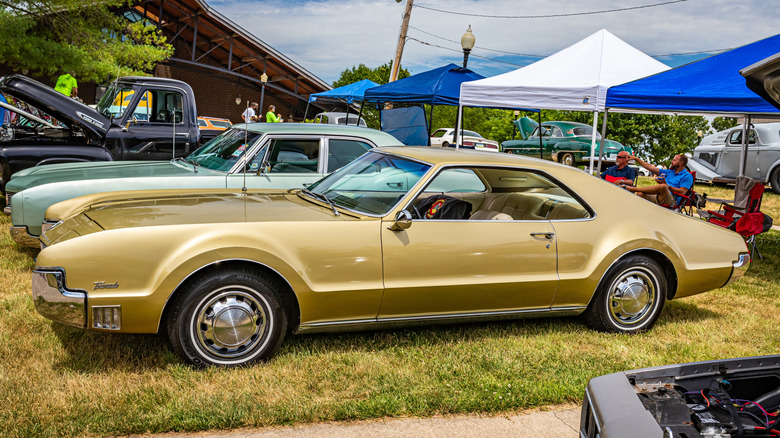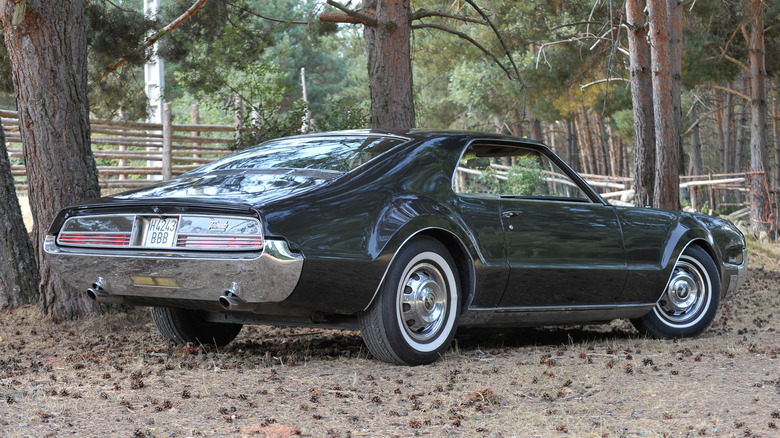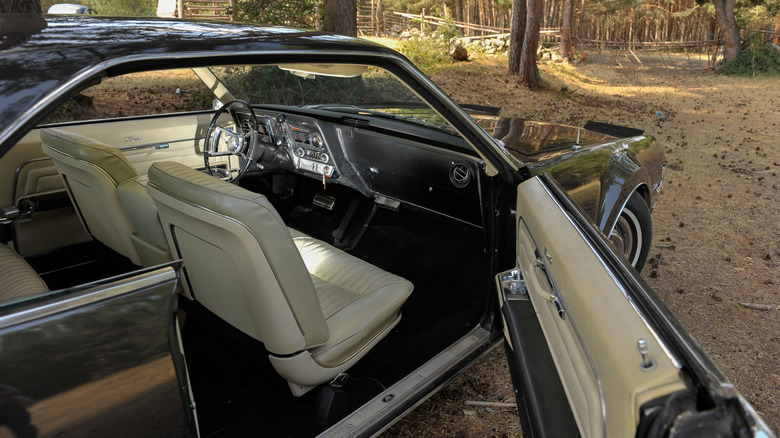Is Oldsmobile a forgotten car company? Well, it’s now been over 20 years since the final Oldsmobile vehicle rolled off a General Motors assembly line, meaning there’s now an entire generation of young American adults who have grown up in a world where Oldsmobile didn’t sell cars. At the same time, though, car enthusiasts and automotive historians know that Olds was more than just another GM brand, and its influence is still felt today.
Several important moments in Oldsmobile’s history influenced the rest of the auto industry, including the production of the groundbreaking Oldsmobile Toronado in the mid-1960s. When it debuted for the 1966 model year, the Toronado was notable for many things. It had unibody construction, radical styling, and — most shockingly — a front-wheel-drive layout.
The Toronado was not the first American car to use this layout. Small American automakers and racers had experimented with FWD in earlier decades, with the 1929 Cord L29 considered the first American production car with FWD. Almost 40 years after the Cord, the ’66 Toronado was the first modern American car to use FWD. It would help put in motion a drivetrain revolution in the decades that followed.
The Oldsmobile Toronado was not your typical FWD car
Though the Toronado helped pioneer the front-drive layout that would start becoming dominant on American cars in the decades to come, it was cut from a much different cloth than the mainstream front-drivers that are so familiar today. The Toronado wasn’t built for fuel efficiency, nor did it use its FWD layout to maximize its interior space for families.
Instead, it was a swoopy personal coupe with a sloping fastback roofline and long hood. Under that hood sat a 425-cubic-inch V8 that made 385 horsepower and a massive 475 pound-feet of torque. The Toronado’s big V8 was mounted longitudinally like in a rear-wheel-drive car, but it sent power to the front wheels via a chain-link drive setup that connected the torque converter to a three-speed automatic transmission.
The so-called “Unitized Power Package” front-wheel-drive system went through various forms of development at General Motors for over a decade before it made its production debut in the ’66 Toronado. Despite its weight and size, the Toronado received high praise for its stable handling and refined driving style. It earned the Motor Trend Car of the Year award in 1966. Several years later, the 1973 Toronado would break ground again, becoming the first car to have factory-installed air bags.
Oldsmobile influenced several other automakers
A year after the Toronado debuted, Cadillac followed suit with its new front-drive 1967 El Dorado, built off the same platform. The Toronado itself would eventually downsize in both dimensions and engine displacement, but it remained in Oldsmobile’s lineup until 1992.
It wouldn’t be until the early 1980s, in the face of the imported competition, that General Motors began its major transition to front-wheel drive on its mainstream and compact passenger cars. While these smaller, cheaper cars would use the more conventional transverse engine layout, lessons learned with the Toronado helped set the stage for GM’s move into the FWD era.
In addition to demonstrating the viability of FWD for automakers like GM, the Toronado also showed that FWD could be effective for more than just maximizing efficiency or lowering costs. In the decades that followed, there would be countless front-drive sports cars from around the world that would further demonstrate how the front-wheel drive layout could spawn some truly great-driving cars.



